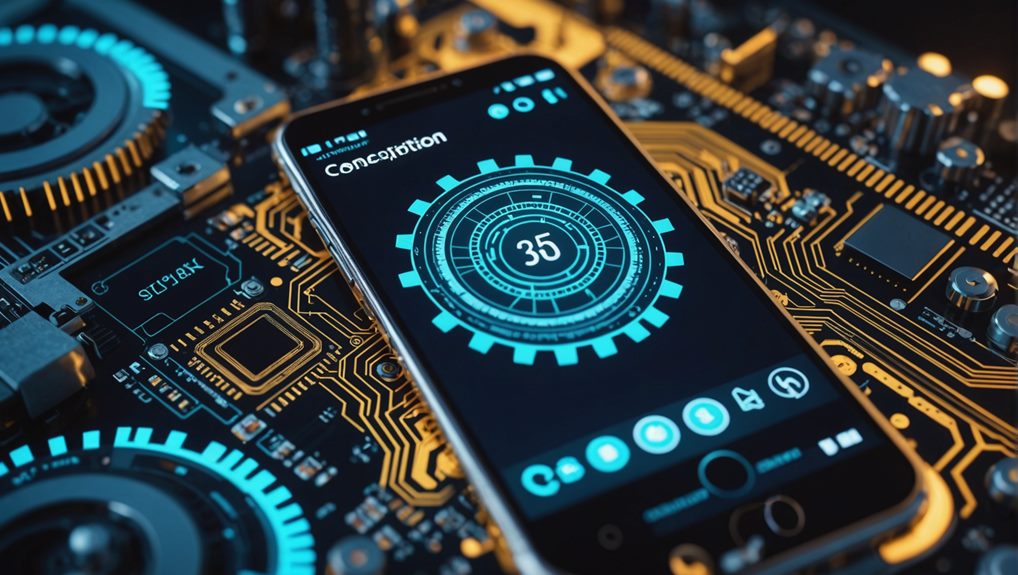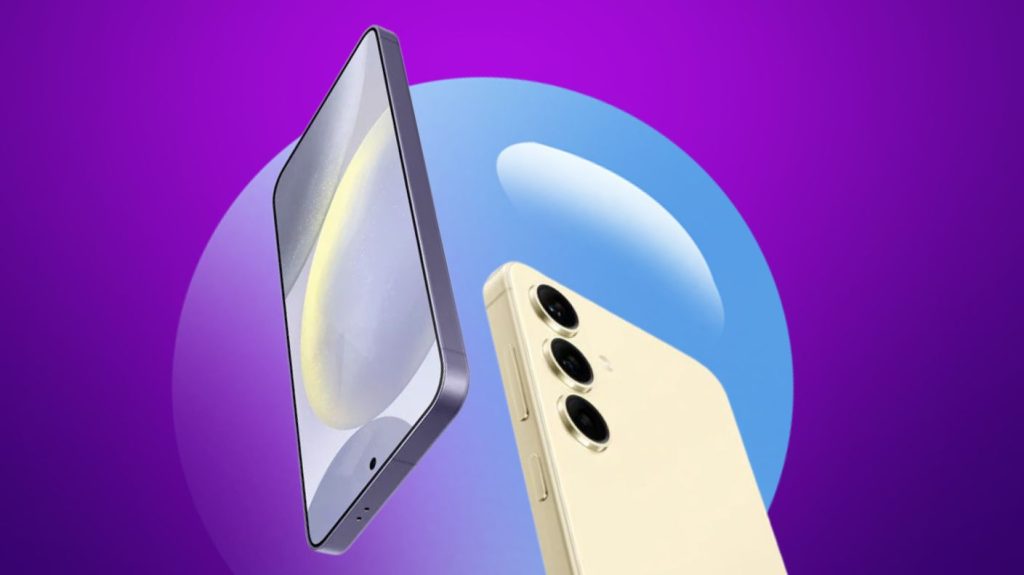You might worry that software updates slow down your phone, but they actually tend to do the opposite. Think of updates as a fresh coat of paint for your device—they provide crucial security patches, boost performance, and fix bugs. Updates can also improve battery life and ensure your apps run smoothly. However, if you’re using an older device, it could struggle with the shiny new features due to hardware limitations, which might cause some slowdowns. It’s like trying to run a marathon in flip-flops—not the best match. Skipping updates could leave your phone exposed to security threats and app compatibility issues, potentially shortening its lifespan. So, unless your phone’s hardware is past its prime, updates usually enhance its performance. Stay with us to explore how to manage updates and keep your older device running smoothly.

Why Are Software Updates Crucial for Your Phone?
You can’t overlook the importance of software updates for your phone’s security, as they patch vulnerabilities and protect against cyber threats. Updates also enhance performance by fixing bugs and optimising system functions, ensuring your device runs smoothly. Plus, regular updates optimise functionality by improving battery life and enhancing multitasking capabilities. Keeping your software current helps maintain compatibility with new apps and services, preventing potential issues with outdated systems.
Ensuring Security with Regular Updates
In today’s digital landscape, your smartphone serves as a repository for personal information, making regular software updates crucial for its security. Outdated systems are particularly susceptible to cyber threats. Here’s why you should prioritise updates:
- Security Patches: Updates provide essential fixes that protect against vulnerabilities and cyberattacks, safeguarding your personal data.
- Timely Protection: Cybersecurity experts recommend updating within days to a week of release to maximise your device’s protection against emerging threats.
- Automatic Installations: Features like Apple’s Rapid Security Response allow seamless, background installations of critical patches, ensuring uninterrupted security.
- Compatibility: Staying updated ensures your device remains compatible with new apps and technologies, providing a smooth user experience.
How Updates Enhance Performance
Software updates are the unsung heroes of phone performance, often delivering optimisations and bug fixes that ensure your device runs smoothly. By keeping your device updated, you make sure it’s equipped with the latest improvements, leading to enhanced functionality and efficiency. These updates also provide crucial security patches, protecting your personal information from potential cyber threats.
Furthermore, updates introduce new features that can significantly improve your user experience, offering better compatibility with modern apps and services. Manufacturers, such as those using OxygenOS, design updates to maintain or even boost performance, with feedback indicating minimal slowdowns. By staying up-to-date, your device adapts to technological advancements, maintaining its long-term viability and potentially increasing its resale value. Embrace updates to unlock your phone’s full potential.
Addressing Compatibility Issues
Keeping your phone updated isn’t just about accessing the latest features—it’s crucial for maintaining compatibility. Outdated operating systems can’t support new apps or services, leading to missed opportunities and potential security risks. Regular updates ensure your device keeps pace with technological advancements. Here’s why staying updated is important:
- App Compatibility: New apps and features require updated systems to function correctly, ensuring you get the most out of your device.
- Security Protection: Updates provide essential patches to guard against vulnerabilities and cyberattacks, safeguarding your personal data.
- Performance Improvements: Addressing compatibility issues often results in performance enhancements, making your device run more smoothly.
- Device Longevity: Regular updates can extend your device’s lifespan and improve resale value by keeping it in line with current software demands.

<h2″>How Do Software Updates Improve Performance?
When you update your phone’s software, you not only get new features that can enhance your user experience but also improvements in battery life. Updates address bugs and improve system stability, making your device more reliable and efficient. Keeping your software current guarantees your phone runs smoothly and takes full advantage of the latest optimisations.
Boosting Battery Life Through Updates
It’s natural to wonder how software updates impact battery life, but these updates can bring about substantial enhancements. They optimise your device’s battery management, improving performance and lifespan. Here’s how they achieve this:
- Battery Management Optimisations: Updates refine battery management features, allowing your device to operate more efficiently.
- Bug Fixes: Regular updates tackle bugs and inefficiencies, reducing unnecessary battery drain.
- Background Process Optimisation: Incremental updates streamline background processes, cutting down power consumption.
- Advanced Power-Saving Modes: New software versions might introduce power-saving settings tailored to your usage habits.
Manufacturers are constantly improving hardware utilisation through updates, which enhances your device’s battery life. Embrace these updates to maintain your phone’s efficiency and ensure it meets your daily needs with optimal performance.
Introduction of New Features to Enhance User Experience
Software updates frequently introduce new features designed to enhance your user experience, making your device more efficient and enjoyable to use. These updates often include improved app functionalities and UI changes that streamline navigation, ensuring you can complete tasks more swiftly. Performance optimisations are also part of the package, allowing for quicker app launches and reduced loading times, which directly contribute to a smoother operational flow.
Moreover, keeping your device updated ensures compatibility with the latest applications and services, so you can access new functionalities without any hindrance. By incorporating user-requested features and improvements, updates can greatly boost satisfaction and usability. Embracing these enhancements not only keeps your device current but also empowers you to utilise it to its fullest potential.
Resolving Bugs and Improving Stability
New features aren’t the only advantages you gain from software updates; they also play a crucial role in resolving bugs and enhancing stability. Regular updates address known issues, leading to fewer crashes and improved device reliability. Here’s how updates enhance performance:
- Bug Fixes: They resolve existing problems, reducing crashes and enhancing stability.
- Performance Optimisation: Updates streamline system processes and memory management for smoother multitasking.
- Security Patches: By closing vulnerabilities, updates prevent slowdowns caused by malware or security threats.
- Feature Optimisation: Manufacturers fine-tune new features to ensure they perform well on existing hardware.

What Happens If You Don’t Update Software?
If you don’t update your software, your device becomes vulnerable to security threats, exposing your personal information to potential attacks. You might also notice your phone’s performance lagging, as it misses out on essential bug fixes and enhancements. Additionally, outdated software can cause compatibility issues with new apps and services, limiting your access to the latest features.
Security Vulnerabilities and Risks
Neglecting software updates on your devices can lead to serious security vulnerabilities. Outdated software lacks essential patches, making you vulnerable to cyberattacks. Here’s what might happen if you bypass updates:
- Increased Risk of Cyberattacks: Unpatched software flaws are prime targets for attackers, potentially leading to breaches.
- Password Compromise: Reusing passwords becomes particularly risky when outdated systems are exploited, exposing multiple accounts.
- Data Breaches: Devices running outdated operating systems are more susceptible to breaches due to known vulnerabilities that attackers can easily exploit.
- Missed Security Enhancements: Without updates, you miss out on improvements that strengthen your device’s security defences.
Impact on Device Performance
Neglecting software updates can lead to a myriad of performance issues for your device. Without the latest software, your phone becomes susceptible to bugs and glitches, resulting in annoying slowdowns and crashes. As developers optimise new features, older systems struggle, leading to reduced efficiency and speed. You might notice apps malfunctioning or failing to open altogether, as their compatibility with outdated software diminishes. By bypassing updates, you miss out on crucial performance enhancements that ensure your device runs smoothly. This oversight could ultimately shorten your phone’s lifespan, as manufacturers focus their support on devices with current software. Prioritising updates ensures your device remains efficient, secure, and fully functional, minimising the risk of these preventable performance setbacks.
Challenges With Outdated Software Compatibility
Keeping your software up-to-date is indispensable for ensuring your device remains compatible with the latest apps and services. If you neglect updates, you may encounter several challenges:
- Compatibility Issues: Developers optimise apps for the latest operating systems. Without updates, you might find apps malfunctioning or completely inaccessible.
- Security Vulnerabilities: Outdated software is missing crucial security patches, exposing your device to threats and potential breaches.
- Performance Degradation: As technology evolves, older software struggles to keep pace with new hardware, causing your device to lag and operate inefficiently.
- Loss of Functionality: Manufacturers often cease support for older versions, meaning some features might vanish entirely if you don’t update.
In the end, ignoring updates compromises your device’s performance and security, making it essential to stay current.

How to Ensure Your Device is Running the Latest Software?
To keep your device updated, regularly check for software updates in your settings menu. If you’re using an iPhone, go to Settings > General > Software Update to make sure your iOS is up to date. Android users can head to Settings > System > Advanced > System Update to check for the latest updates.
Steps to Check for Updates on Android
Keeping your Android device up to date is essential for ensuring it remains secure and performs optimally. Here’s how to check for software updates:
- Open Settings: Access the “Settings” menu on your device.
- Go to System Settings: Select “System” and then choose “System updates.”
- Look for Updates: Check if there are any available updates. Some devices may have a “Software update” option directly in the main menu.
- Get Ready: Ensure you’re connected to Wi-Fi and have more than 50% battery life before downloading.
Enabling automatic updates under “System updates” can streamline this process, ensuring your device always has the latest software without the need for manual checks.
How to Make Sure Your iOS is Up to Date
Ensuring your iOS device is up to date is just as crucial as keeping your Android device current for optimal performance. Navigate to Settings, tap General, and choose Software Update to see if any updates are available. To make life easier, enable Automatic Updates so your device can download and install updates overnight while it charges, minimising disruption. It’s advisable to update within a few days to a week of a new release to benefit from critical security patches and enhancements. Regular updates not only strengthen security but also ensure compatibility with new apps and features designed for the latest iOS. Keep yourself informed by checking Apple’s official website or social media for announcements on new updates, and ensure your device operates smoothly and securely.

Do Software Updates Affect Older Devices?
When software updates roll out, you might wonder how they affect older devices and their compatibility. It’s common for older models to face performance issues because they can’t always handle new features designed for modern hardware. To manage these challenges, focus on optimising settings and functionalities that align with your device’s capabilities.
Compatibility Considerations for Older Devices
Although software updates are crucial for maintaining security and adding new features, they can present challenges for older devices. You might observe that updates are optimised for newer hardware, potentially causing slowdowns on older models. Here’s the reason why:
- Processing Power: Older smartphones may lack the processing power needed to support new features, resulting in slower performance.
- Memory Limitations: Limited memory in older devices can struggle with the demands of updated operating systems.
- Hardware Incompatibility: New software features might not be supported, leading to a diminished user experience.
- Security vs. Performance: While updates enhance security, older devices might experience performance degradation.
Understanding these factors can help you manage expectations and make informed decisions about updating your device.
Managing Performance Issues on Older Models
Older devices often encounter specific challenges with software updates, which can frustrate users. Updates tailored for newer hardware may strain older systems, leading to slowdowns. However, these issues often stem more from unfamiliarity with new features than from actual performance degradation. To address this, consider performing clean installations after major updates. This process removes residual files that could hamper your device’s efficiency. Additionally, take the time to familiarise yourself with and adapt to new settings and features. Doing so can significantly enhance your experience and debunk myths of inherent slowdowns. Regular updates, especially from systems like OxygenOS, aim to improve performance, so staying informed and proactive can help you maintain your device’s functionality.
Final Thoughts
In a nutshell, don’t dread software updates—they are vital for keeping your phone secure and running optimally. By updating regularly, you gain improved features, bug fixes, and enhanced performance. While older devices might slow slightly due to increased demands, the trade-off for security and stability is worthwhile. So, when that update notification appears, welcome it. Just like a car needs regular servicing to run smoothly, your device’s longevity and efficiency depend on staying up-to-date with the latest software upgrades.





